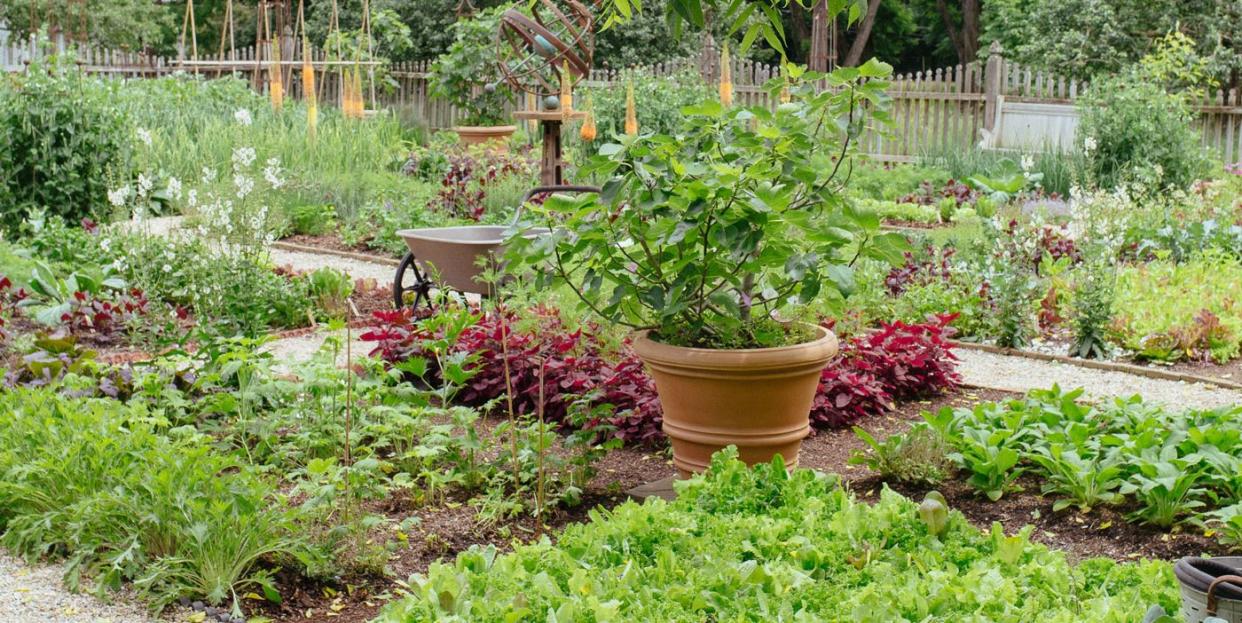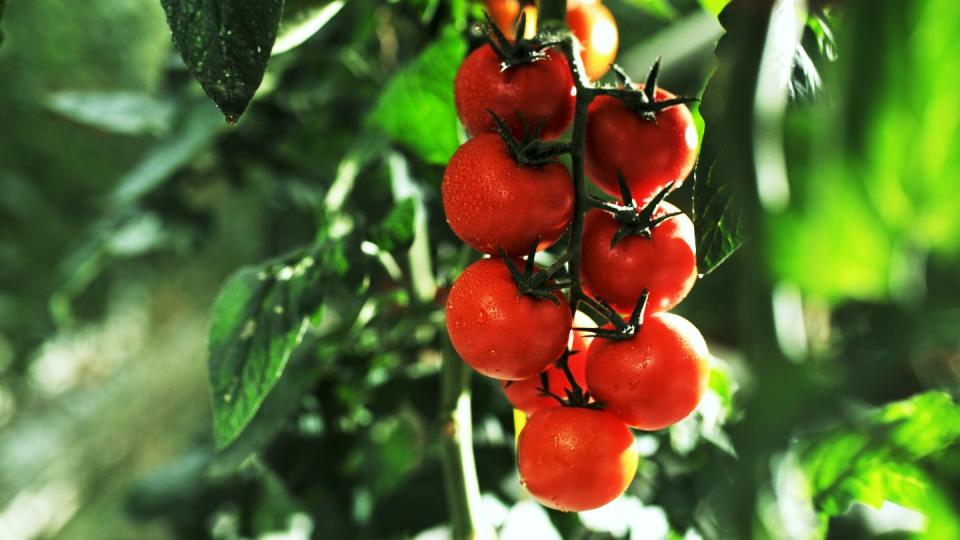How to Create the Most Beautiful Vegetable Garden You've Ever Seen

Anyone familiar with design doyenne Bunny Williams knows she loves a good garden. The interior designer—whose latest book, Love Affairs with Houses, chronicles some of the many homes she has lovingly renovated—extends her expert eye beyond the interior walls of a home, cultivating lush gardens around them. I, myself, have watched Bunny point to an ornate floral arrangement and identify each and every specimen in it without so little as a beat of pause. Suffice it to say, she knows her way around a garden. But, as any good gardener knows, flowers are far from the extent of it.
As part of an upcoming documentary on Bunny for the Institute of Classical Architecture & Art, of which she is a trustee, the designer takes a film crew on a tour of the gardens at her Connecticut home, most specifically, her abundant potager. For those not in the know, a potager is a French-style "kitchen garden," where vegetables, flowers, and herbs coexist. Ahead of the release of the documentary, the ICAA gave House Beautiful a sneak peek of this footage—and Bunny shared her expertise on creating the perfect potager.
Be creative with the layout.
The first thing to know? There's hardly any wrong way to set up your own potager. "The potager is inspired by the French gardens, and the French usually have these very formal ones with all these patterns," says Bunny. "As a decorator, of course I find that irresistible. So instead of just having the wonderful American vegetable garden, which is long rows, there's a bit more geometric design to it."
In Bunny's own garden, she lays out a number of beds and plans variety within them. "We think about color, texture, design, and it begins to make a pattern. You want to look at the foliage, and for instance, an onion, which has tall, thin foliage, looks beautiful planted next to a cabbage. You're always looking at what the foliage of the plants going to be. and that helps with making the patterns interesting."
Think multi-seasonal.
As soon as you pick from your garden, "you're always planting the next crop," Bunny says. That means keeping in mind which plants will be best when. "For instance, lettuces do well in the beginning of the season but not in the middle, when it's really hot. So when you take out a row, you put in seeds for the next growth, say beets and onions."
Mix in flowers.
"My potager is not only food, which we love, but it's cutting flowers as well, because I love to do flowers for the house," explains Bunny. "I like to have a garden that I cut from, because often I don't want to cut out of the perennials because I want the flowers to be in bloom. So you want to have a garden that you are harvesting." With the right planning, you can source the food and decoration on your table from the same garden.
Create an herb section.
Bunny designates one raised square in her garden for herbs, and plants Basil—"for pesto"— oregano, sage, rosemary, and more.
Know your space.
Keep in mind how your plants will grow, area-wise, Bunny advises. "For example, some vegetables, like squash, they spread." If you're worried about these plants taking over, contain them in their own bed or train them up a trellis.
Small space? Build up.
Speaking of trellises, upward movement is key in small spaces. "Tomatoes, for instance, do really well in a pot," with a stake to grow up, Bunny points out. She suggests bamboo stakes for a more natural look.

Create inspired recipes.
With all these herbs and vegetables at her disposal, we have to ask: What are Bunny's favorite garden dishes? "Well, just last night we had some green beans we picked," she says. She's also partial to a corn salad, roasted garlic to spread on bread, and cold soups like gazpacho and vichyssoise. That said, when your garden is tended right, very little preparation is required: "I find that when a tomato is really ripe and fresh, it you know, it can have a little coarse sea salt, but that's about it. You really don't need to overdo it." Bon appetit!
Follow House Beautiful on Instagram.
You Might Also Like

